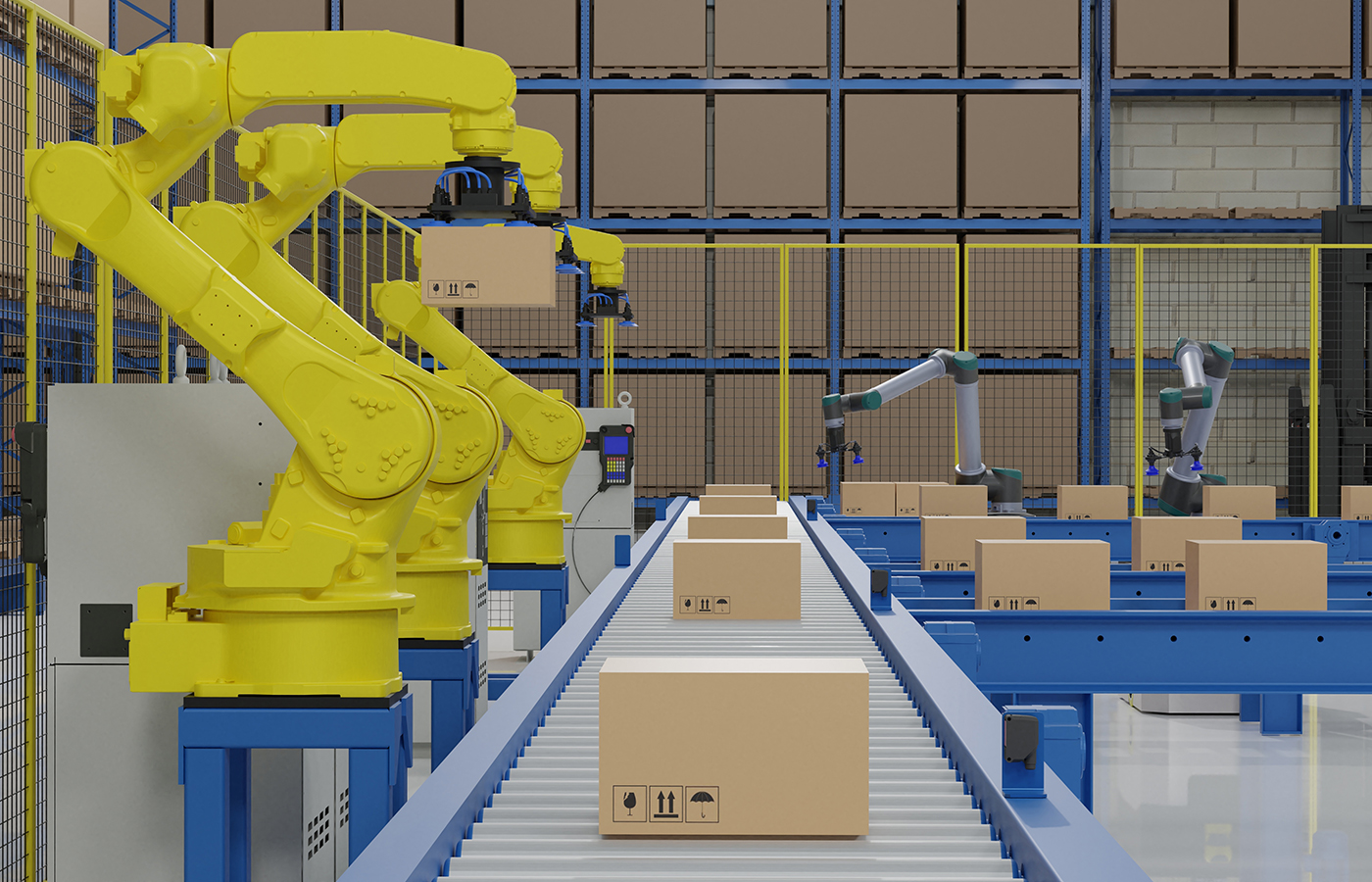Putting Industrial Robotics in the Middle of Your Warehouse Operations
Posted: October 6, 2023

In today's market, there is no shortage of automation products bringing efficiencies to warehouses and other logistics centers. From pickers, conveyors, ASRS, AGVs and more, the market is flooded with standard and pre-packaged solutions from a variety of companies. While they address the common challenges you face, most have limitations to how they can be implemented and often still require manual operations and other workarounds to create an end-to-end solution.
Because of this, more and more manufacturers and 3PLs are learning the value of using industrial robotics to handle “in the middle” operations such as automated induction, pick and place, and palletizing. Doing so allows them to quickly overcome key strategic challenges while being flexible for future needs, all while improving employee safety, saving money, increasing throughput, lowering error rates and maximizing floor space.
As companies navigate this new opportunity, operations and supply chain leaders are re-thinking their approach to automation. In the process, they are asking key questions, such as:
Aren’t We Already Using Robotics to Automate Our Business?
Automation is already a key driver to the logistics of most businesses, and industrial robots are often a major ingredient to that success. However, operation teams across the world are seeing the value in optimizing the available “out of the box” solutions with true industrial robotics integration. This means utilizing robotics in places where manual labor is still required. Instead of risking unplanned downtime due to employee availability or injuries, robotics allow you to automate repetitive tasks through automated induction and robotic pick and place. Additionally, the intensive process of palletizing and de-palletizing can be supported by robotics to improve operational speed and efficiency.
How Are Industrial Robotics More Reliable Than What I am Doing Today?
With labor challenges and supply chain instability, the 24/7 and “lights out” potential of industrial robotics is hard to ignore. Even in the best of market conditions, organizations are still susceptible to temporary changes that can require adaptability. Robotics are also scalable, allowing you to quickly grow your capacity while adding redundancy to your operations. Plus, with real-time data being collected from your robots, you have the ability to glean actionable insights at the production and executive levels. This allows you to anticipate operational trends and even proactively schedule maintenance.
Are Industrial Robotics Flexible Enough to Meet the Demands of My Operations?

With the right integration partner, industrial robotics have the potential to meet all the nuances of your organization. They are capable of reliably handling the most challenging elements of your supply chain, including cold storage temperatures, weight and fragility concerns, mixed SKUs, and unique sizes and shapes. Additionally, they can be tuned to match the natural supply and demand fluctuations of your business, including seasonal increases and end of month shipments.
How Do I Determine Where Industrial Robotics Can Best Help My Business?
Implementing robotics in new ways can be a challenge until you find the right partner. Industrial automation integrators, like JR Automation, can share their technology insights and experiences, while simultaneously learning the intricacies of your operations. Not only can they assist you in the assessment, design and implementation of a solution, but an integrator can provide you with training, service and support needs in the years to come. Plus, they can help you anticipate future scaling needs so you can do so quickly and efficiently.
Learn more about how industrial robotics can be programmed to solve your complex challenges. Contact JR Automation today and have one of our experts share our experience in helping companies like yours develop seamless solutions to warehousing and logistics. Or visit our website to learn more about our capabilities in warehousing and logistics automation.






